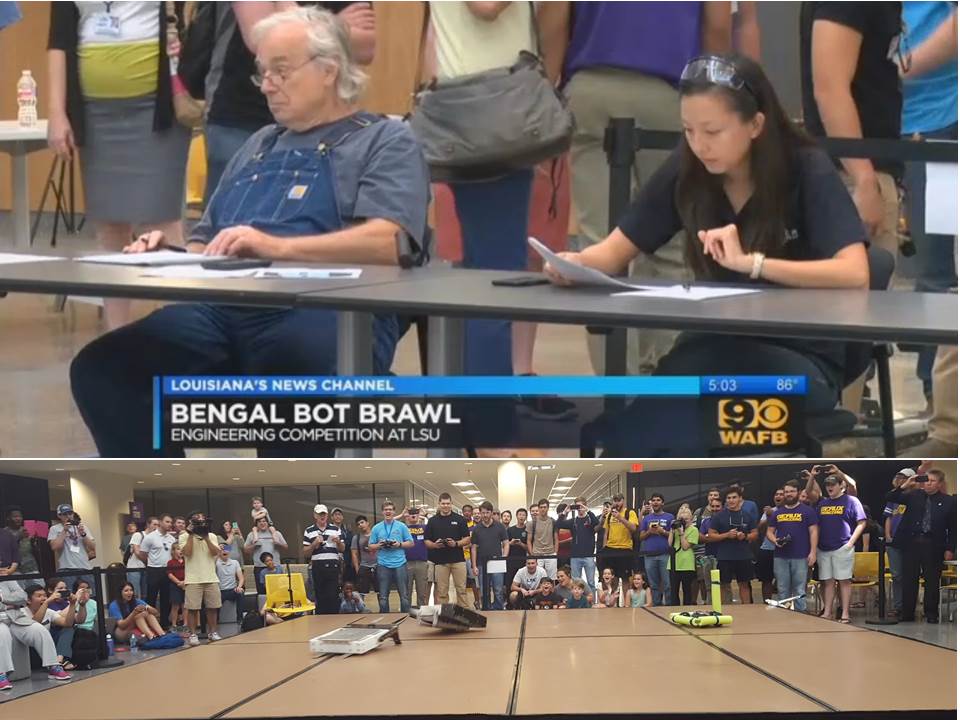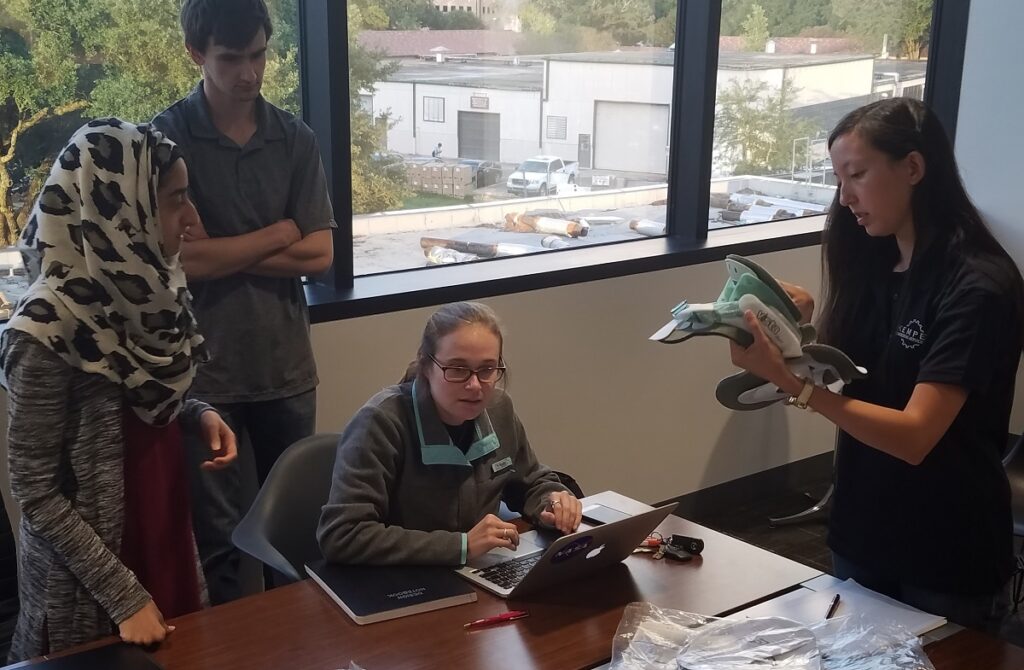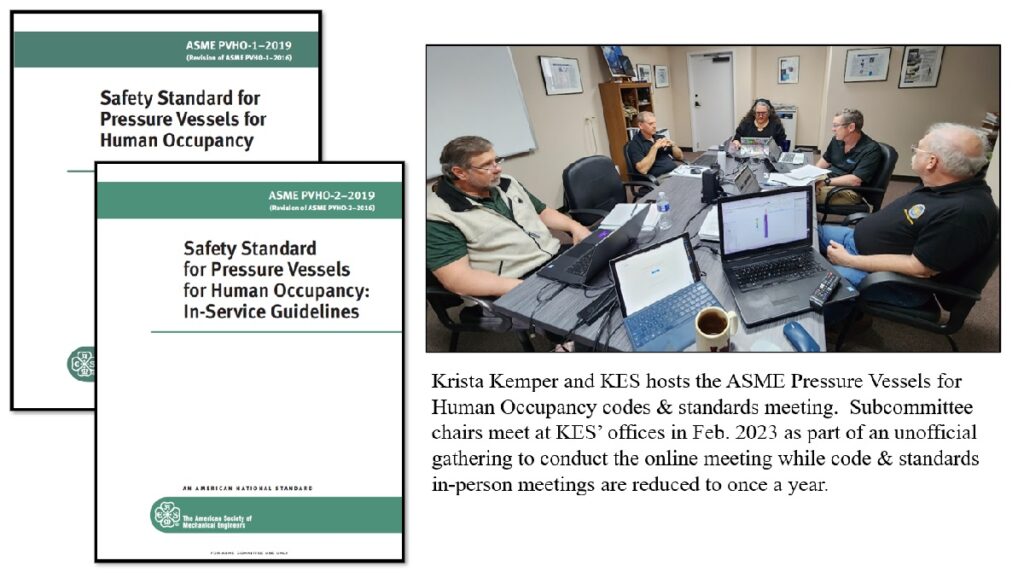
KES hosting an informal gathering for PVHO codes and standards during a scheduled online committee session.
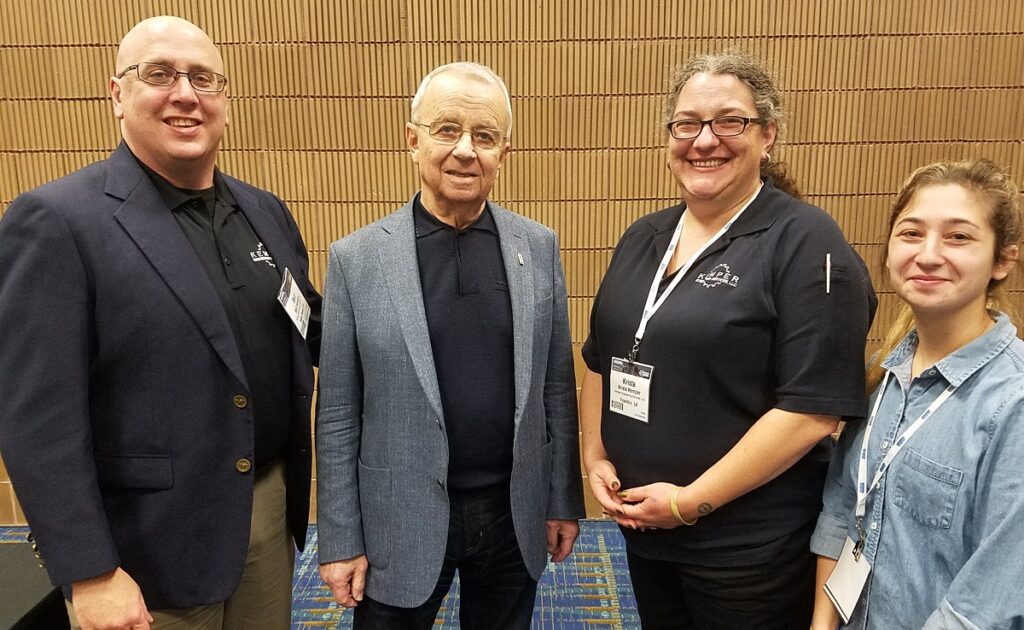
Dr. Anatoly Sagalevich is one of the most renowned living ocean explorers and had brought director James Cameron to the Titanic. With KES’s Bart Kemper, Krista Kemper, and college intern Madeline Hunt at the Marine Technology Society submersibles meeting at Underwater Intervention 2018. KES is a regular participant at Underwater Intervention as part of their support for deep sea exploration and the equipment needed to do so. That year Bart Kemper and Linda Cross presented, “Heat Retention and Structural Integrity of Glassy Polymer Viewports.”
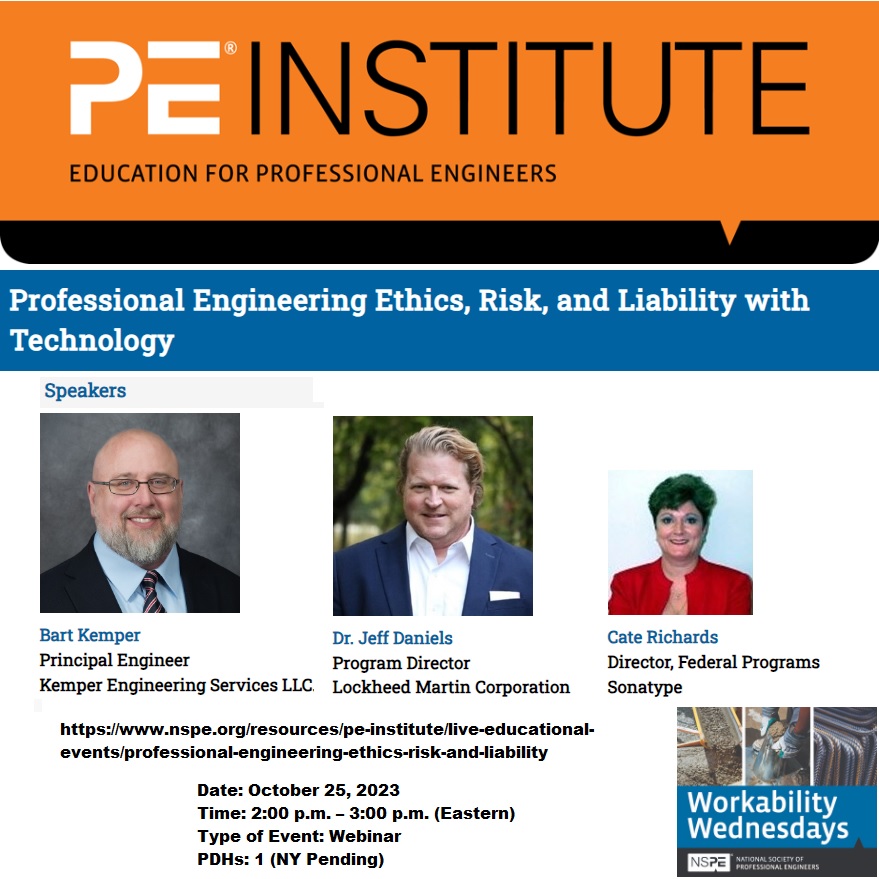
NSPE 2023 seminar – Professional Engineering Ethics, Risk, and Liability with Technology. An example of how KES people support professional societies through sharing expertise, experiences, and insight.

Bart Kemper regularly presents classes to engineering seniors at Southern University in Baton Rouge and University of Louisiana in Lafayette. Profs. William Emblom and Yonas Niguse of ULL and Prof. Patrick Mensah of SU have worked with Bart for many years in refining his presentations.
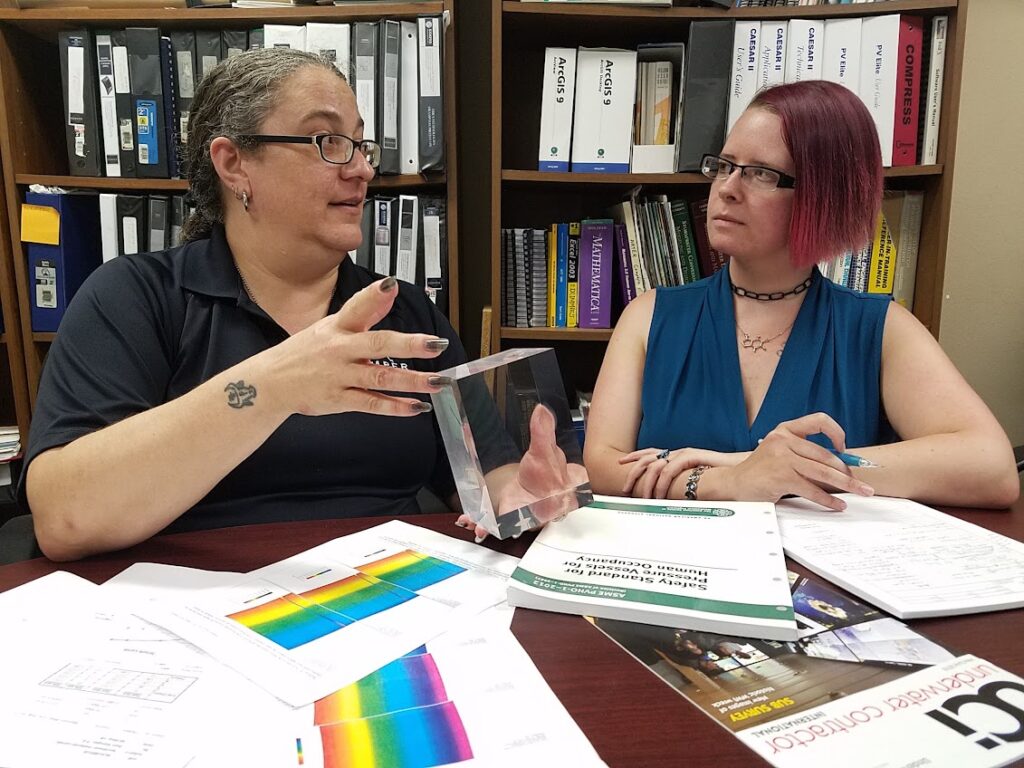
Krista Kemper explaining acrylic engineering design factors to Jade Cutter, a Univ. of Washington college intern.
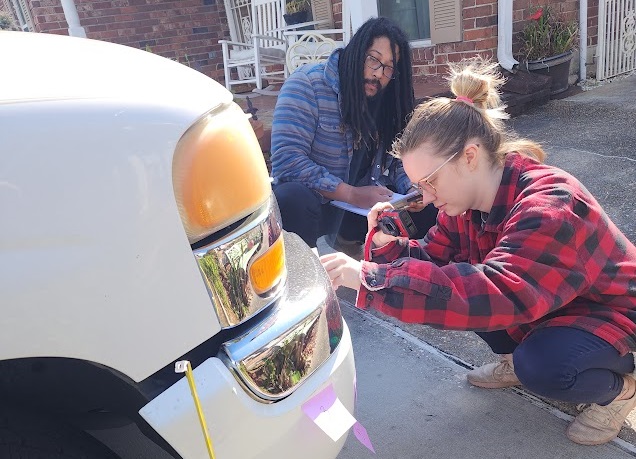
LSU engineering student interns Quinton Moore and Alexis San Miguel take measurements and photographs for a forensic engineering case.
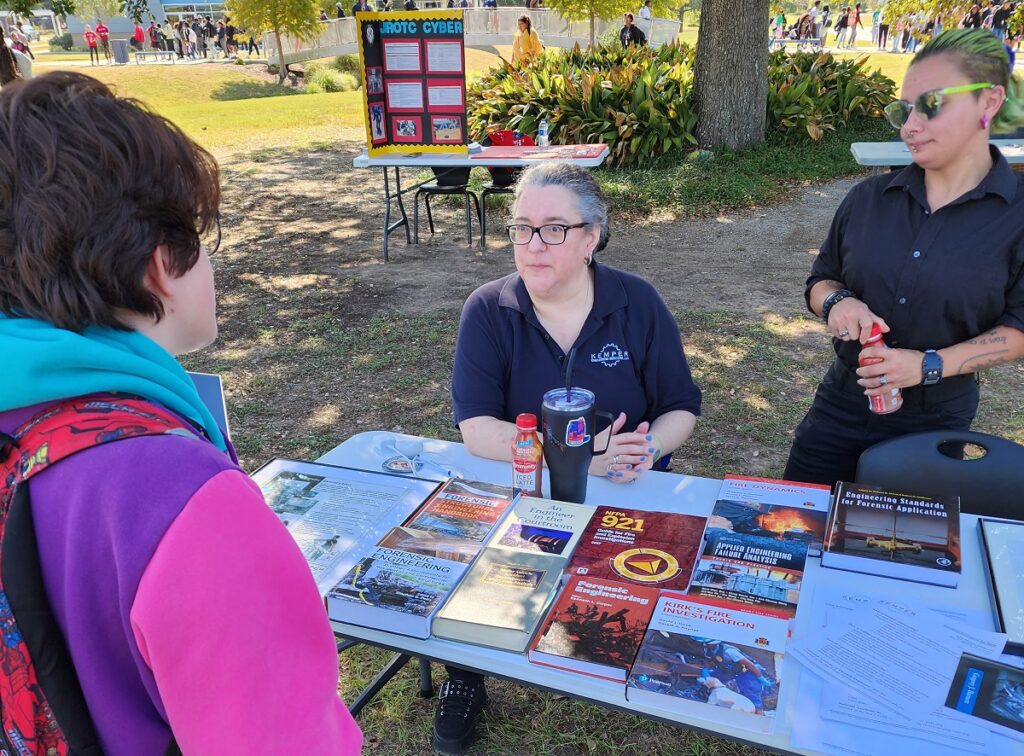
Krista Kemper and Chasity Brown talk about forensic engineering from different perspectives to a young science-oriented student at the 2023 Forensic Fest at Liberty Magnet High School, Baton Rouge LA.
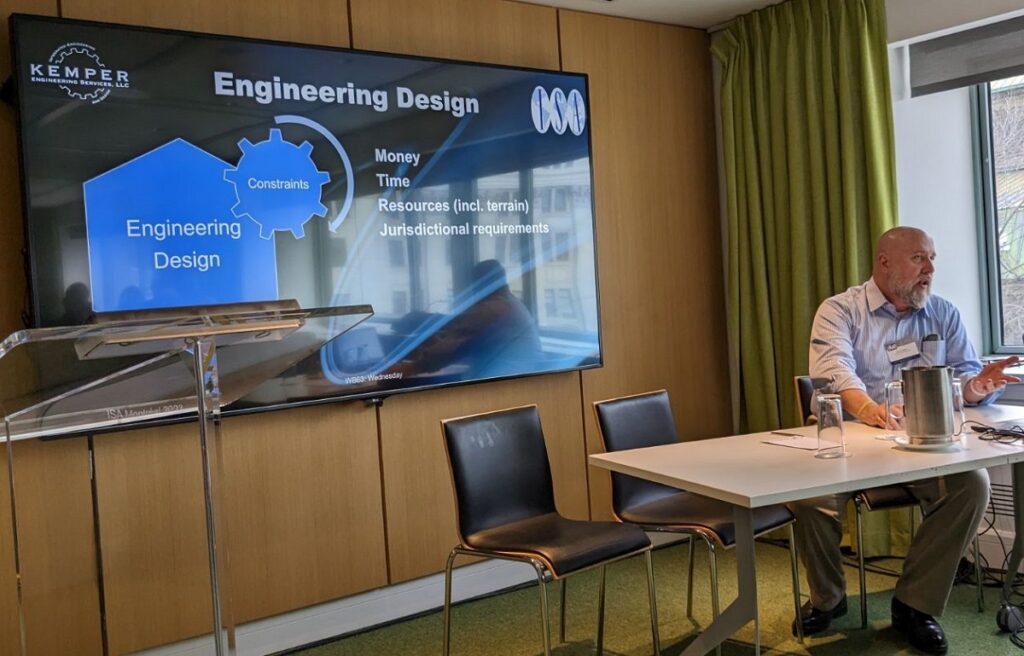
Bart Kemper presenting at the International Studies Association 2023 conference in Montréal, Canada on “Security and Infrastructure Design.” This is part of a larger topic, “Complexity and Security.” The ISA conferences are focused on policy and policy development. Few engineers are involved in these conferences despite often the topics are about infrastructure and other engineering-centric areas.

Bart Kemper providing commentary during the attempted rescue phase of the 2023 experimental Titan Submersible tragedy. KES issued a press release as the rescue efforts transitioned to recovery.
Outreach
Being part of the community
KES team members give back to the engineering community at many levels, locally, nationally, and internationally. Not only do we allow our team member volunteer “on the clock,” we often fund their travel and lodging. This places our team members on the cutting edge of developing solutions to developing issues and gives them an opportunity to learn from industry leaders, but it also means time away from family. Our company was founded by military veterans and is still lead by military veterans, so service is part of our company spirit. Engineering provides another way to serve. KES has always sought creative, innovative people be part of the team. This has naturally led to a diverse workforce of employees, college interns, and consultants. Our team includes or has included people of color, immigrants, military veterans, people with disabilities, LGBTQIA, and people returning to the workforce. Our outreach efforts reflect this.
MEDIA INQUIRIES: mediaforKES@kempereng.com
Professional Societies
Engineering societies rely on volunteers for everything. While almost all professional groups need volunteers for self-governance, engineering societies do more, such as ASCE’s “Failure to Act” reports on government infrastructure providing professional nonpartisan assessments to inform the public as well as government officials. Acting as nonpartisan professional “honest brokers” is a key role that has repeatedly earned the public’s trust. Another example are the many building codes, safety codes, and engineering design codes that are developed by various volunteer committees in various technical groups and with oversight by organizations such as the American National Standards Institute (ANSI).
These codes are continually updated, capturing updates in technology as well as painful lessons learned, such as the changing of design wind speeds in response to the devastation by Hurricanes Andrew, Katrina, Rita, and later Hurricane Sandy. In a real way, codes and standards are “written in blood,” as the impact of disasters are captured and learned from. In all of this, it’s the unpaid professionals who spend their time working out the “shoulds vs. shalls”. As new technology comes to the forefront, such as computer simulations like Finite Element Analysis (FEA) and Computational Fluid Dynamics (CFD) in the 1980’s or the current rise in Artificial Intelligence and Machine Learning, these changes are worked into the various codes and standards as techniques and principles are proven.
KES supports the development of codes and standards. Our company’s principal engineer leads by example with membership in multiple ASME and ASTM standards, including ASME’s Codes and Standards for Pressure Vessels for Human Occupancy (PVHO) and ASTM E54, Homeland Security Applications. PVHO is particularly critical given it involves people under pressure, such as medical devices or deep sea diving chambers, which is why KES and our skill with pressure vessels was invited to join. Krista Kemper was the first woman member of the ASME PVHO committee and subcommittees. Linda Cross was the youngest full member of the committee. Bill Crowley was on PVHO for decades, working for various commercial diving companies, before inviting Bart and KES to the meetings based on the work KES was doing for him, and now he is one KES’s consultants.
Bart and Krista are also part of the National Society of Professional Engineer’s Emerging Technology Committee as well as its preceding task groups, where they are part of a multi-discipline team developing mitigations to issues such as the 737MAX crashes, the medical devices failures such as the Therac 25, and the vulnerabilities of modern infrastructure to malicious code such as the Colonial Pipeline cyber attack. Bart used in his military expertise as an Army engineer to be part of the Risk Assessment and Mitigation for Critical Asset Protection (RAMCAP) group, which developed an all-hazards method for assessing threats to structures and systems. While the RAMCAP group closed once the various books were published, Bart is now involved in current technology issues includes Mobile Uncrewed Systems (such as aerial drones, ROVs, and AUVs) as well as developing engineering standards and guidance documents for the application of simulations, Artificial Intelligence, and Machine Learning through ASME Verification, Validation, and Uncertainty Quantification guidance documents and standards.
Bart also volunteers as the Editor-In-Chief of the Journal of the National Academy of Forensic Engineers, responsible for managing the peer review process and publication of a biannual journal, as well as is part of the Ethics Committee for the National Academy of Forensic Engineers. At the local level, he is in the Louisiana Engineering Society and served in the full progression of offices in the Baton Rouge Chapter through Chapter President as well as several state committees, community action groups such as the Mid-City Redevelopment Alliance, and planning commissions.
University level
We support the Louisiana State University System by working with various schools. We supported the LSU Baton Rouge engineering Capstone program for over two decades. Our senior consultant, Prof. Emeritus A.J. McPhate, is a retired LSU professor who volunteered with the Mechanical and Industrial Engineering Capstone Industrial Panel from his retirement in 1992 until 2022. Bart Kemper was a regular participant in the Capstone Industry Panel for over 16 years and is currently a regularly lecturer at University of Louisiana, Lafayette (ULL) and Southern University (SU) in Baton Rouge. Krista Kemper and Linda Cross were also Industry Panel participants. It is important to bring the lessons learned in industry to college students, particularly when many of the professors are primarily researchers or educators without significant industrial experience and cannot speak to the ethics and responsibilities of being a Professional Engineer.
We also provide opportunities for students to intern at KES. Our interns do not simply observe. They are included in the project management cycles and contribute to solving real-life problems. We also try to give our young engineers and college interns opportunities to contribute to professional publications with other authors, such as “Failure modes for acrylic polymers in Section VIII pressure vessels,” presented at the 2021 ASME Pressure Vessel and Piping conference, and “Advancing Towards Design By Analysis for Glassy Polymers,” presented at the 2022 MTS Submarine Symposium.
Pro Bono
KES has donated engineering work to various causes and projects, such as providing technical review for reports and papers. An example of that is Bart Kemper being selected as part of a forensic engineering team to review the findings of the National Science Foundation’s Arecibo Radio Telescope engineering report as well as the engineering work done by the KES team as part of the NSF Ocean Decade “Ocean Shot.” KES takes every job seriously, including the pro bono work, because the physics involved does not change simply because the work is donated.
An important driver in KES’s participation in the justice system as forensic engineers is doing our share in making the system work the way it should. While lawyers are advocates, expert witnesses must not be so. Providing the legal team with opinions firmly grounded in physics and facts gives the lawyers the information they need to assess the case. For select cases KES has reduced its fees or worked entirely pro-bono. All of our pro-bono work is carefully considered and reviewed the same as if it was being paid at full rates.
Public Engagement
There are many ways to engage as engineers outside technical circles. One way our team members have done so is by volunteering to give classes or demonstrations at grade schools, middle schools, and high schools. We have done this as part of the NSPE “Engineer in the classroom” program and well as working directly with local schools to support the STEM education program. We have worked with organization like Pathful Connect to use technology to participate in classrooms nation-wide.
We respond to media inquiries. Please send all media inquiries to mediaforKES@kempereng.com and we will respond as soon as we can.
We also interact with the public in other ways. Bart Kemper is a member of the International Studies Association and is engaged with national policy and foreign relations professionals in subjects including infrastructure, security, and the impact of technology. He draws upon his work as a consultant as well as his 30+ years of military service, which included international security and infrastructure projects. We also provide interviews and analysis for media, particularly with respect to technical matters related to public safety, health, and welfare.
It’s not always work. Krista and Bart are also long-time science fiction fans and have attended science fiction conventions as “professionals” for many years. This generally entails attending panel discussions on topics such as alternative energy, space flight developments, emerging technology, and other areas of interest for the people attending. Sometimes the topics are about fictional portrayals but often it’s about real-life events and developing issues. For many this is their only direct experience in listening to an engineer talk about their roles and responsibility in projects and why people like Roger Boisjoly, the whistleblower for the Space Shuttle Challenger disaster, still matter. The hope is to not just educate and inform the people in the room, but also provide insight to authors who write the novels and screenplays that portray engineers and the engineering profession.
Regardless of the level, we encourage our team members to find ways to participate in professional and local activities and be part of the community. Bart Kemper is our Outreach Director and can be reached at bkemper@kempereng.com. You can follow us on Instagram at “kempereng” or look for the hashtag #kempereng. We are on Facebook at facebook.com/kempereng and LinkedIn at https://www.linkedin.com/company/kemper-engineering-services-llc/.
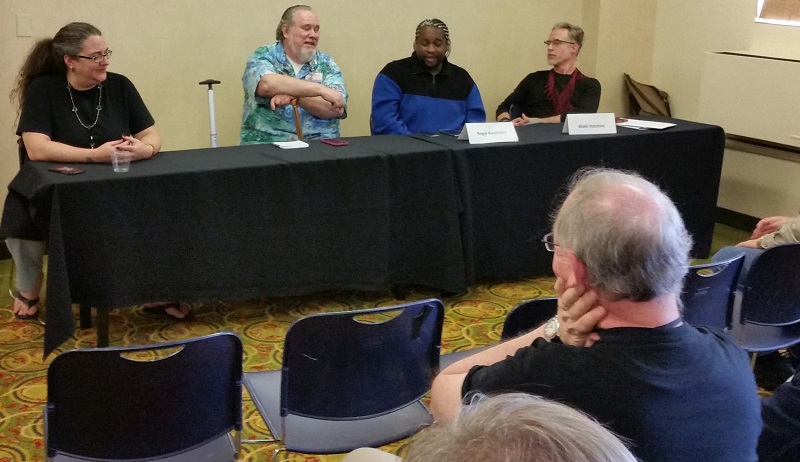
Krista Kemper on a “business of engineering” panel at Orycon 2015 with author Mike Moscoe (Mike Shepherd), engineer/inventor Roget Ratchford, and author Blake Hutchins
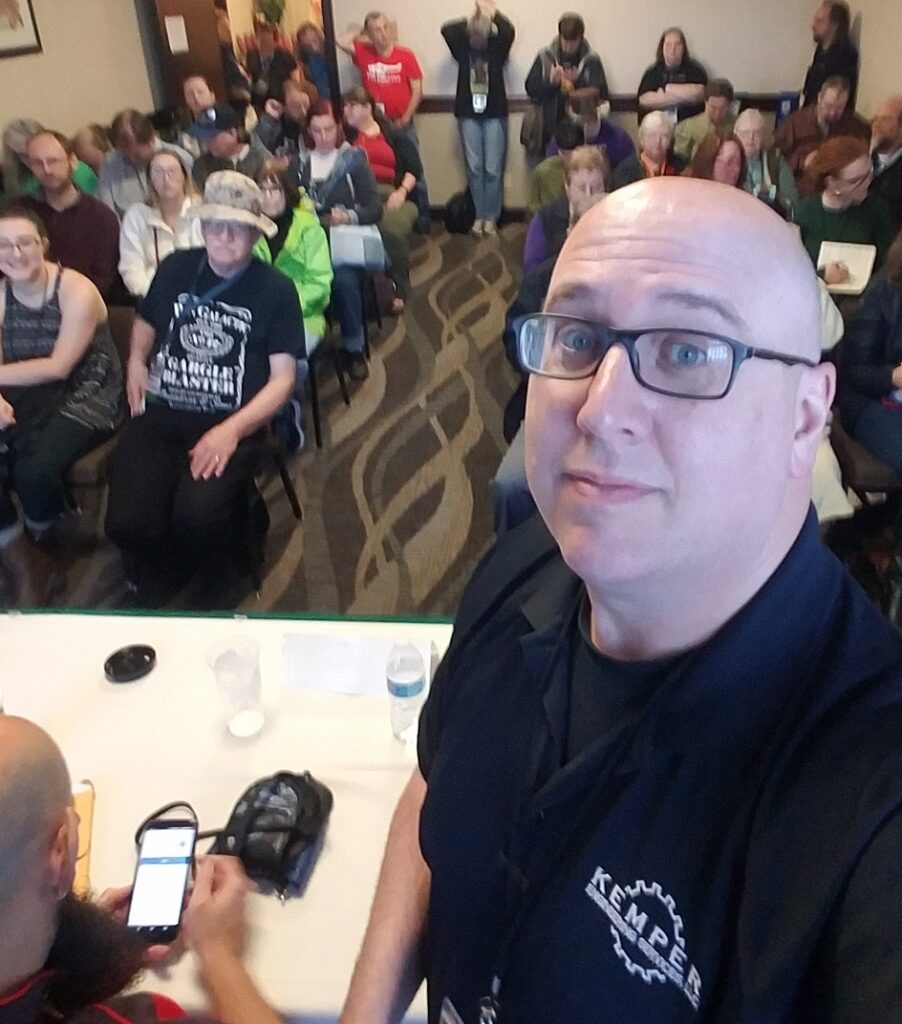
Bart Kemper getting ready to present on infrastructure in science fiction Orycon, a science fiction convention in Portland, Oregon.
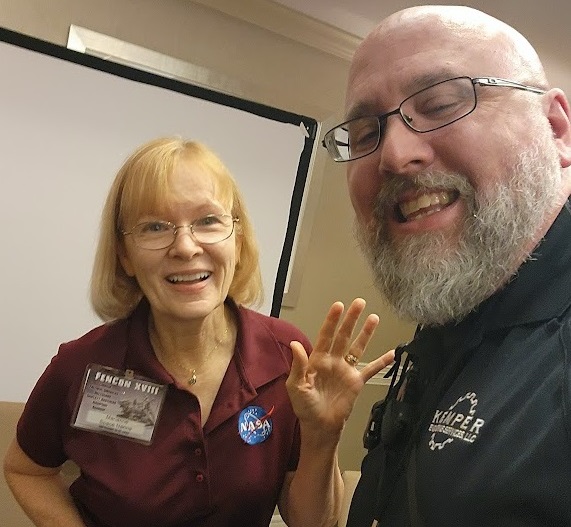
Marianne Dyson is a former NASA flight controller with a degree in physics, now writing nonfiction books. She is one of the many professionals Bart Kemper speaks with at panels at science fiction conventions, such as 2022 FENCON in Dallas, Texas
Please go to our Home Page to see examples of our services and case studies.


